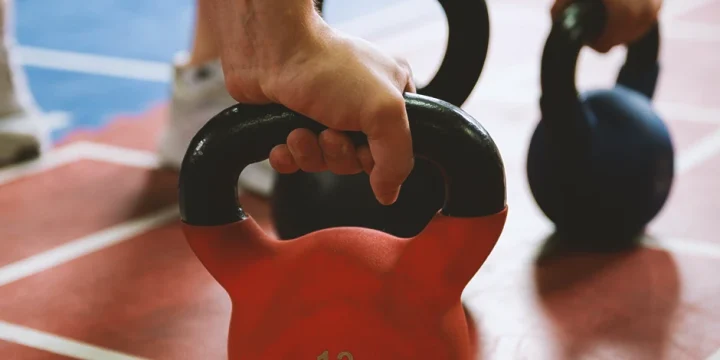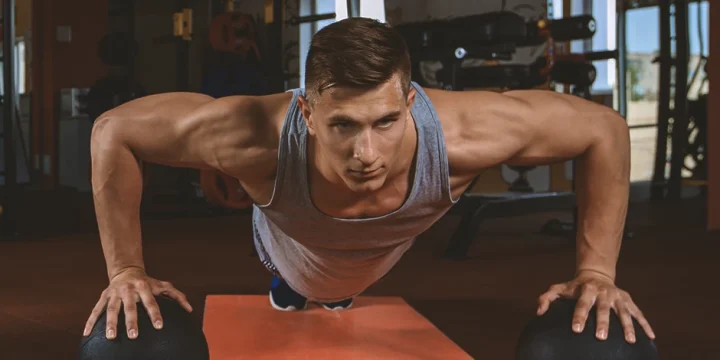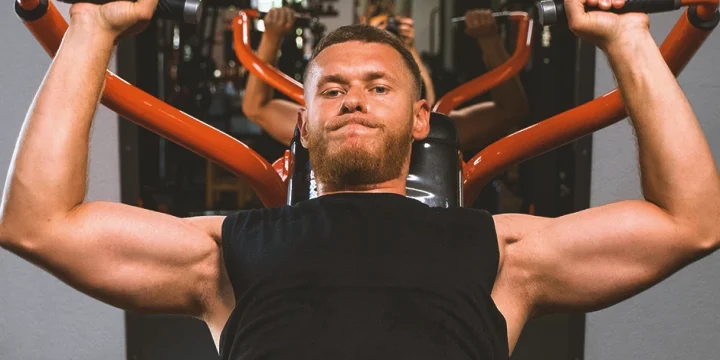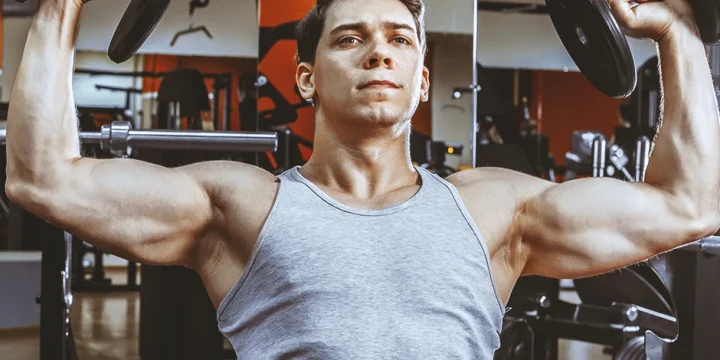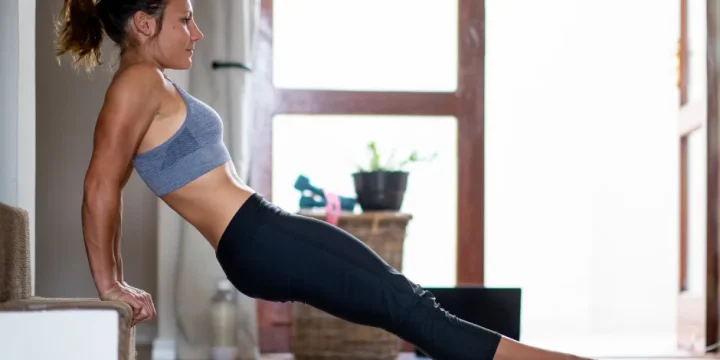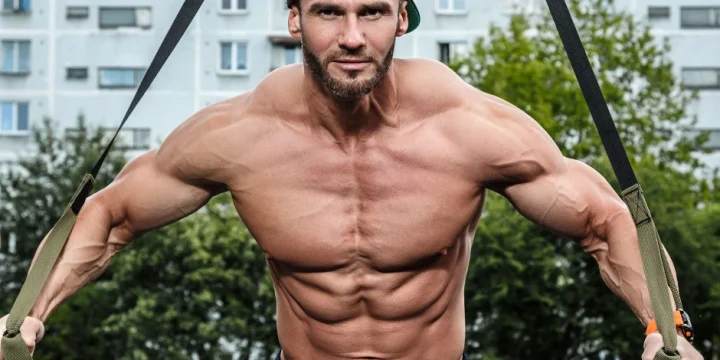A good chest workout should enable your joints to move generally as the weight load is applied in the same direction as your muscle fibers.
That is why old-school training techniques are a solid foundation to return to in a universe of so many options.
As a certified fitness trainer, I went through a vast amount of research to know the best chest exercises the golden-era guys performed for the gains.
This article will provide my research and findings on the best old-school chest workouts.
Quick Summary
- Classic old-school chest workouts include barbell bench presses, dumbbell flyes, dumbbell inline bench presses, chest dips and cable crossovers, and dumbbell pullovers.
- Since machines and fancy equipment were limited, old-school weightlifters used simple training techniques to work out their chests.
- Today's workout splits usually involve high-volume exercise 2-3 times weekly, but in the 1970s, competitors like Arnold often trained 6 days a week, increasing intensity as competitions neared.
- In my opinion, the enduring legacy of old-school chest exercises lies in their ability to build a solid foundation for any fitness journey.
The Old School Chest Workout

Old-school bodybuilders, despite lacking today's advanced equipment, achieved remarkable physiques with prominent chests.
Before we get to the top old-school chest exercises, warm up for 10 minutes.
My experience as a fitness trainer has shown that pre-workout stretching and warm-ups greatly minimize muscle and joint injuries, leading to safer, more productive sessions.
1. Barbell Bench Press
The barbell bench press is an excellent upper-body workout for women and men that improves muscle stamina and endurance.
How to perform:
- Lay on the flat bench, unrack the weight, and grab the bar somewhat wider than shoulder-width apart.
- Tuck your elbows into your body at a 45-degree angle.
- Place both feet flat on the floor beneath your butts and arch your back.
- Remove the bar and drop it a few inches above your sternum.
- By pushing your feet to the floor, press the weight and engage your chest muscles.
- Repeat for reps.
2. Dumbbell Flyes
The dumbbell fly employs a chest fly mobility model to isolate the muscle groups of the chest, allowing it to develop and become stronger.
"The major benefit and charm of the dumbbell fly occurs when your arms are brought together, not when they are widest. This is where you can compress the pectoral fibers and truly promote chest growth."
- Ebenezer Samuel, Certified Strength & Conditioning Specialist
How to perform:
- With a neutral grip, grab the dumbbells from the floor (palms facing in). Sit on the bench with the ends of the weights in your hip crease.
- Lay back and bring the dumbbells close to the chest to get into position. Take a deep breath, and press the weights to lockout at the peak once you're in position.
- Retract the shoulder blades, unlock the elbows, and gently drop the weights laterally while keeping the elbow angle.
- Reverse the action by squeezing the pecs together and returning the weights to their starting position once they reach chest level.
- Begin the next repetition without letting the dumbbells contact you, and repeat until the set is done.
Also Read: Best Dumbbell Workout Routine
3. Dumbbell Incline Bench Press
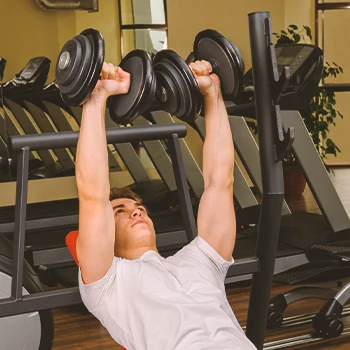
Challenging the upper pecs around the clavicles is helpful for muscular growth in this area.
You may focus on the upper chest by performing the incline bench press variation and working the muscle from a varied angle.
How to perform:
- Take two dumbbells in your arm and sit on the incline bench's edge with your feet on the floor.
- Use the back of your left leg to propel the left dumbbell backward while lying down, then the right dumbbell, until you're lying flat on the incline bench.
- Tuck the elbows in slightly and compress your chest muscles as you press the weights straight up.
- Drop the weight till you feel a slight stretch, then repeat.
4. Chest Dips
The chest dip is an excellent exercise for targeting the muscle groups of the chest.
It will also indirectly strengthen the shoulders and triceps muscles.
How to perform:
- Step onto the dipping platform (if possible) and place your hands in a neutral grip.
- Begin the dip by freeing your elbows and steadily lowering your body until your forearms parallel the ground.
- Regulate the descent to parallel, then push back to the starting position with the palms.
- Repeat until the required number of repetitions has been reached.
5. Cable Crossover
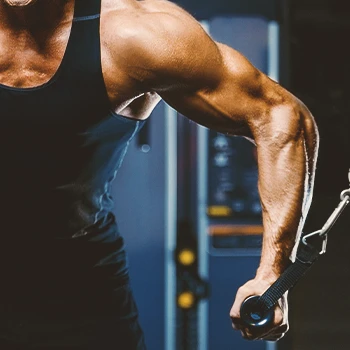
Cable crossovers aren't free weights, but Arnold Schwarzenegger did them in Pumping Iron for his Arnold's Classic chest workout.
The incredible advantage of cables is that they maintain continual tension on the muscle group being exercised.
How to perform:
- Set the cables to around mid-chest height.
- Grasp both sides and stand between the machine, but slightly go forward and place one leg in front of the other for stability.
- Bring the cables together semi-circularly, squeezing your chest muscle groups until the hands nearly touch, with your elbows slightly bent.
- Reverse the movement until you feel a subtle stretch in the chest muscles.
- Repeat for reps.
6. Dumbbell Pullovers
Dumbbell pullovers strengthen the lats and chest, burning fat effectively.
As a result, they're a great complement to your upper-body training program.
How to perform:
- Sit at the end of a sturdy weight bench. Put your feet slightly broader than the bench on the floor.
- Hold a dumbbell in each hand. Roll backward until you are lying on the bench. Your spine, head, and neck should all be supported appropriately.
- Raise your arms above your chest, toward the ceiling. Your hands should face each other, and the elbows should be slightly bent.
- Maintain a strong core and back by inhaling and extending the weights back and above your head. Allow about 3 to 4 seconds to extend your upper arms so the dumbbells are behind completely but not under your head.
- Slowly exhale and bring your arms back to the starting position.
- Repeat for reps.
Arnold's Classic Chest Routine
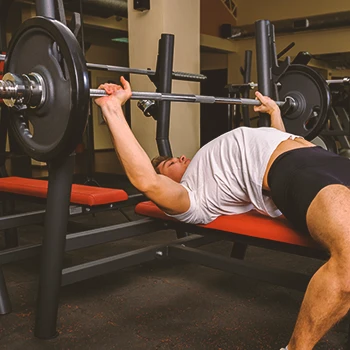
Arnold Schwarzenegger, a legendary bodybuilder, was renowned for his impressive pecs and biceps, key features of his Olympia-winning physique.
His chest, often hailed as the best in bodybuilding history, was sculpted through his classic chest routine.
"I always start my chest workout with barbell bench presses. For six repetitions, I'll apply the pyramid concept, beginning with a lesser weight and progressing to a heavier weight. I'll then perform incline barbell presses to target the upper chest.
I prefer to perform this for ten to 15 reps to generate a strong pump. Next, I perform dumbbell flyes on a flat bench to stretch out my pecs and target the inner region.
Then, I'll finish my workout with dips, which I do a lot of. This also stretches out my pecs and gets much blood flowing through them. Dips also target my lower pecs more." Arnold Schwarzenegger says.
Related: Best Chest and Bicep Workout
Arnold's Classic Chest Routine
- 5 sets of 6 to 20 repetitions of Bench Presses
- 5 sets of 10 to 15 repetitions of Incline Barbell Presses
- 5 sets of 10 to 15 repetitions of Dumbbell Flyes
- 5 sets of 15 repetitions of Weighted Dips
Along with these chest workouts diet, particularly high-protein foods in combination with healthy fats, and complex carbohydrates plays a key role in muscle development.
Breaking Down the Chest Muscles

Let's have a look at the muscle groups that comprise the chest.
They're the muscles you'll be working on throughout your chest workouts.
1. Pectoralis Major - the most significant muscle of the chest, consisting of two heads.
- Clavicular Head - the pectoralis major's upper, lesser section.
- Sternocostal (sternal) Head - the lower, more prominent section of the pectoralis major.
2. Pectoralis Minor - a muscle that lies beneath the pectoralis major and is linked to the scapula (shoulder bone) and ribs as per the National Institutes of Health reports [1].
3. Serratus Anterior - connected to the ribs and placed in the middle of the chest wall.
4. The Subclavius - is a tiny muscle beneath the collarbone (clavicle) as shown in reports by the National Library of Medicine [2].
Old School Training Method
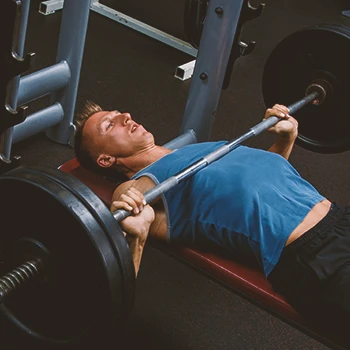
During their training, legendary bodybuilders relied on simple methods due to limited technology, with free weights forming the core of their routines.
Typically, their workout split included high-volume exercises 2 to 3 times a week, though some opted for lower volume with greater intensity.
In my experience as a fitness trainer, this mirrors Arnold Schwarzenegger's 1970s regime at Gold's Gym Venice, where competitors trained up to six days a week, often focusing on the same muscle group daily, especially as competitions neared.
Notably, the extensive cardio machines available today were absent then.
Many golden era bodybuilders would raise their heart rates and remain lean due to their rigorous training regimens.
Techniques like supersets and pyramid training, which I've found effective with my clients, were staples then.
These old-school methods have significantly influenced today's exercise strategies.
Tips for Chest Workout

Choose Your Grip Carefully
You may employ a variety of grip stances when training with the barbell.
Each one will cause a separate section of the chest muscle to contract.
Select the grip depending on which muscle group you wish to work on.
- Wide Grip: Focuses on the outside chest and shoulders.
- Close Grip: Emphasizes the triceps and inner chest.
- Narrow Grip: Targets the lower chest pecs.
- Reverse Grip: Emphasizes the upper chest and relieves strain on the shoulders while increasing triceps activation.
Pause & Hold
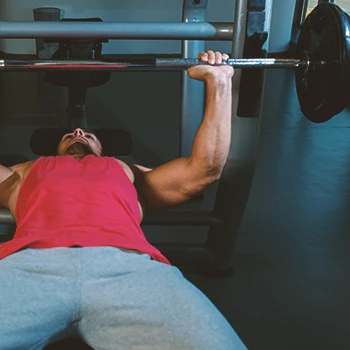
Maintaining a hold and contracting your chest muscles extends muscle fiber engagement, aiding in growth and strength.
This isometric approach, supported by the National Institute of Health research, boosts muscle hyperactivity [3].
Post-workout, these fibers remain active. Including top protein powders in your regimen, as I advise my clients, can enhance recovery after chest sessions.
Use a Spotter
Repeated exercises might make you feel like a spotter isn't necessary.
However, for new exercises, a spotter is crucial to prevent injuries, especially when trying different grips.
For instance, in attempting the decline bench press, a spotter can ensure the correct technique.
From my experience, a training buddy doubles as a spotter, offering motivation and accountability at the gym.
This dual role is perfect for anyone seeking an extra push in their workout routine.
FAQs
What Exercises Did Old School Bodybuilders Do?
Old school bodybuilders performed exercises such as bench presses, squats, barbell rows, overhead presses, deadlifts, and dips, utilizing more weight to grow muscle.
What Is the Best Chest Exercise Ever?
The best chest exercises ever are the traditional chest workout that includes scapular push-ups, traditional push-ups, incline bench presses, narrow and wide grip chest presses, and tricep dips.
How Did People Gain Muscles in the Old Days?
People gained muscles in the old days by lifting big stones, rocks, basic dumbbells, heavy clubs, and body weights to improve muscle, strength, and agility.
References:
- https://www.ncbi.nlm.nih.gov/books/NBK545241/
- https://www.ncbi.nlm.nih.gov/pmc/articles/PMC8742971/
- https://pubmed.ncbi.nlm.nih.gov/28131688/
About The Author
You May Also Like
